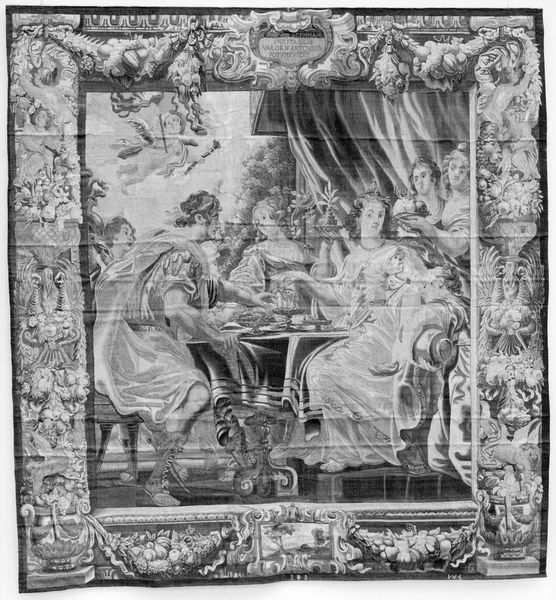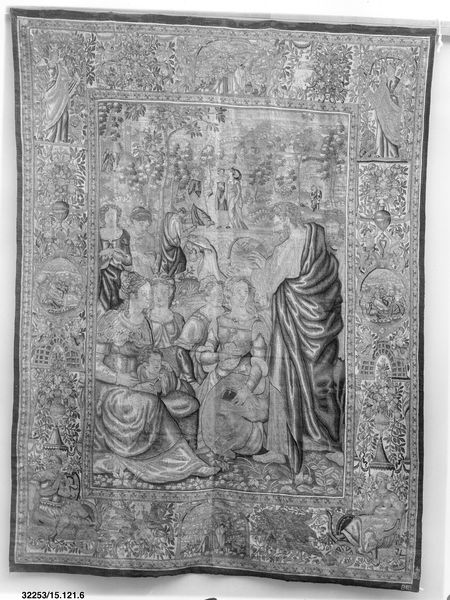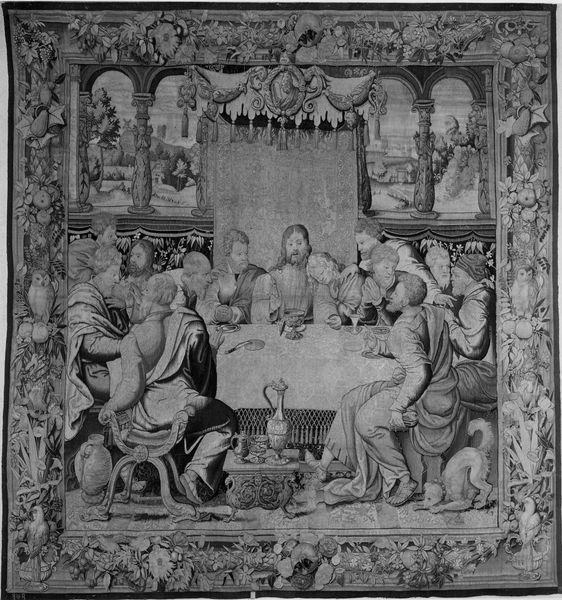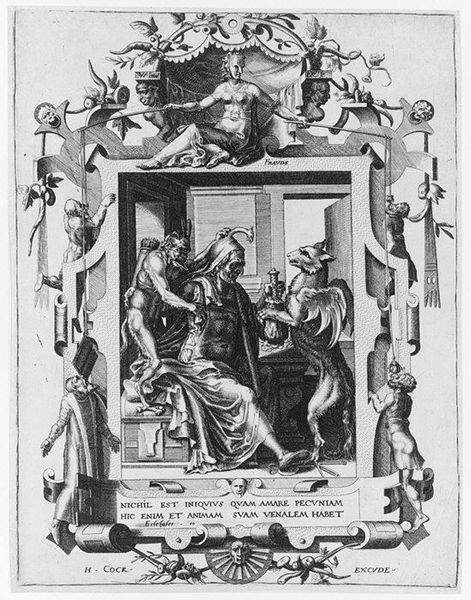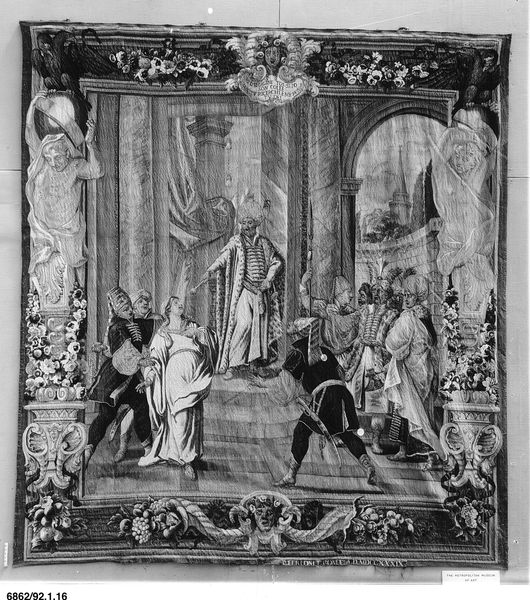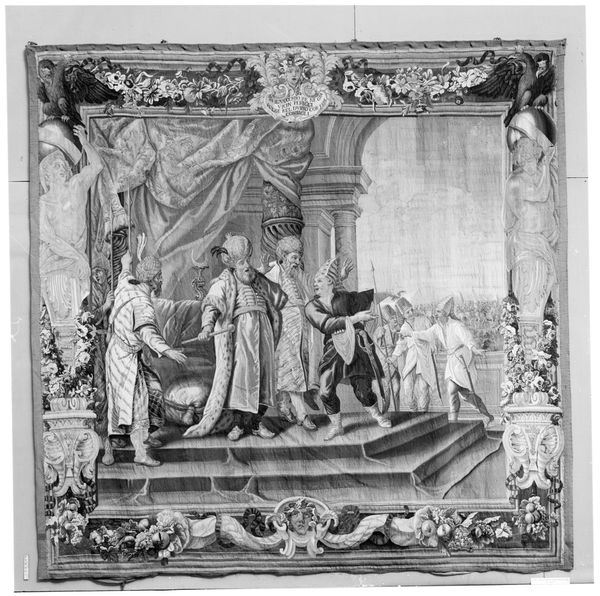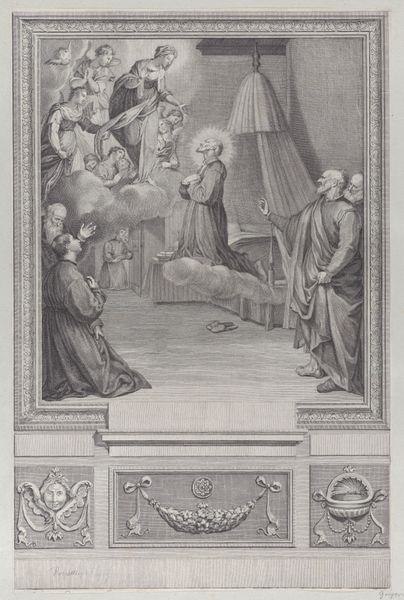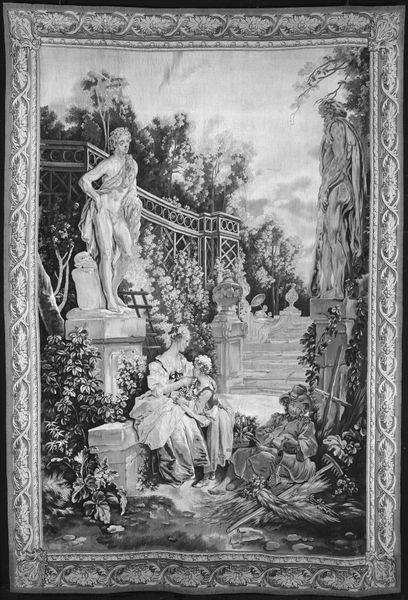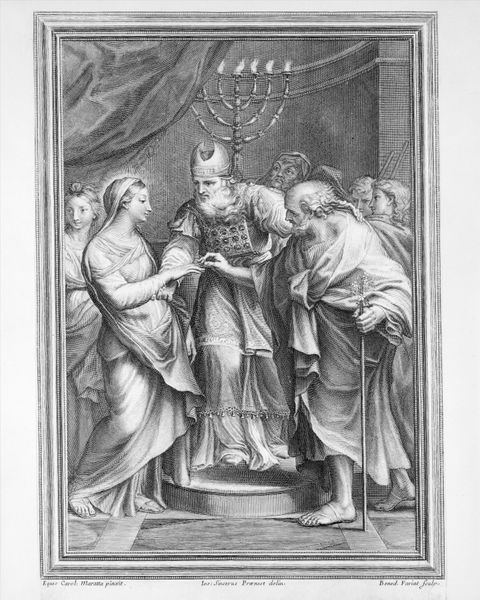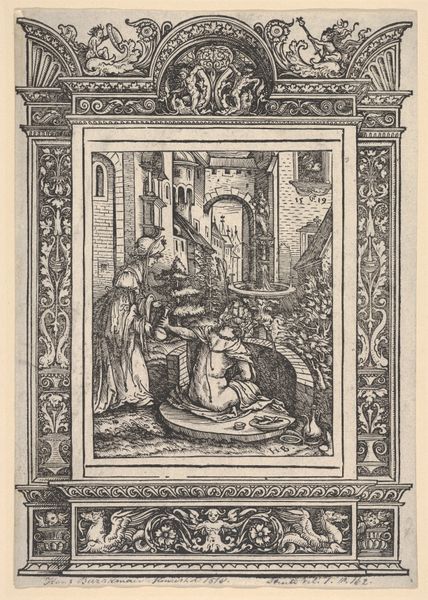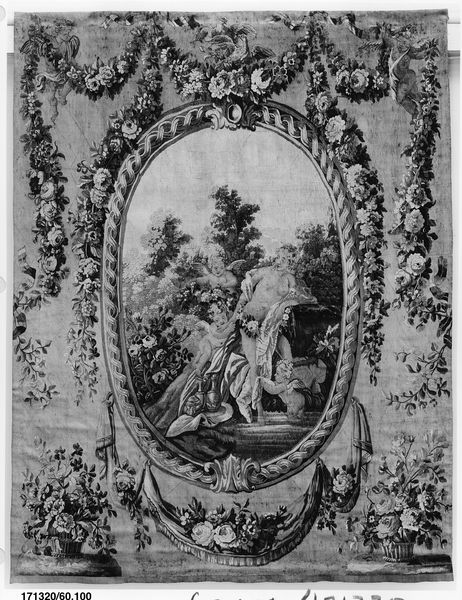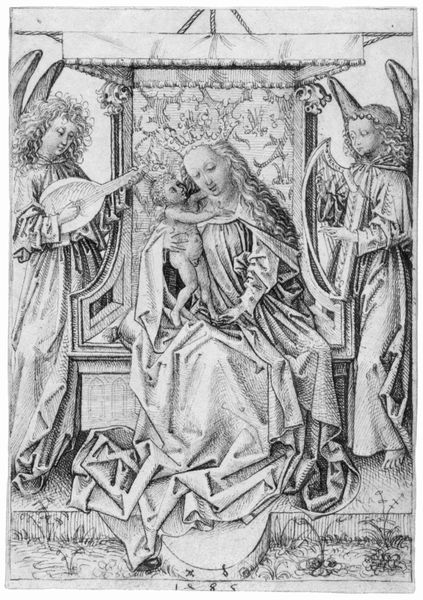
Paul before Agrippa from a set of Scenes from the Life of Saint Paul 1595 - 1605
0:00
0:00
weaving, textile, sculpture
#
narrative-art
#
baroque
#
weaving
#
textile
#
mannerism
#
figuration
#
sculpture
#
men
#
history-painting
#
decorative-art
Dimensions: H. 11 ft. 7 in. x W. 8 ft. 8 in. (355.6 x 264.2 cm.)
Copyright: Public Domain
Editor: So, this is "Paul before Agrippa from a set of Scenes from the Life of Saint Paul," made sometime between 1595 and 1605. It's a woven textile currently housed at the Met. I'm struck by the sheer density of figures and detail packed into a tapestry; how do we unpack such a complex narrative scene? Curator: Precisely! Think about tapestries like this in their original context. They weren’t just decorative; they were statements of power and wealth. The dense figuration and narrative complexity advertised the patron's access to skilled artisans and their understanding of religious and political stories. Editor: That makes sense. It's almost like they are using the medium to say "look at what I can afford to commission and understand". Do you see the composition and its potential effects related to Baroque theatricality, aiming to impress the viewer with a spectacle? Curator: Absolutely. And beyond spectacle, consider the political implications of depicting Saint Paul before Agrippa. How might this scene, representing the confrontation between religious belief and secular authority, be interpreted during the late 16th and early 17th centuries? Think about the Counter-Reformation and the political tensions inherent in religious imagery. Editor: So it’s not just a Bible story; it’s also about the Church flexing its authority? Curator: Precisely. The tapestry's grandeur, disseminated and displayed, serves as a potent visual tool within broader cultural and political dialogues. This art wasn’t just *in* the world; it was actively *shaping* it. Now, can you appreciate it on those terms? Editor: Definitely! Understanding its original display conditions and social significance makes me appreciate the narrative on a whole new level. It shifts my view to think of its meaning as propaganda, or… at least, advocacy. Curator: Glad to hear that you’re now internalizing this viewpoint. Art is seldom ever just for mere aesthetic contemplation. It is an engagement of complex interactions involving cultural norms and prevailing powers.
Comments
No comments
Be the first to comment and join the conversation on the ultimate creative platform.

